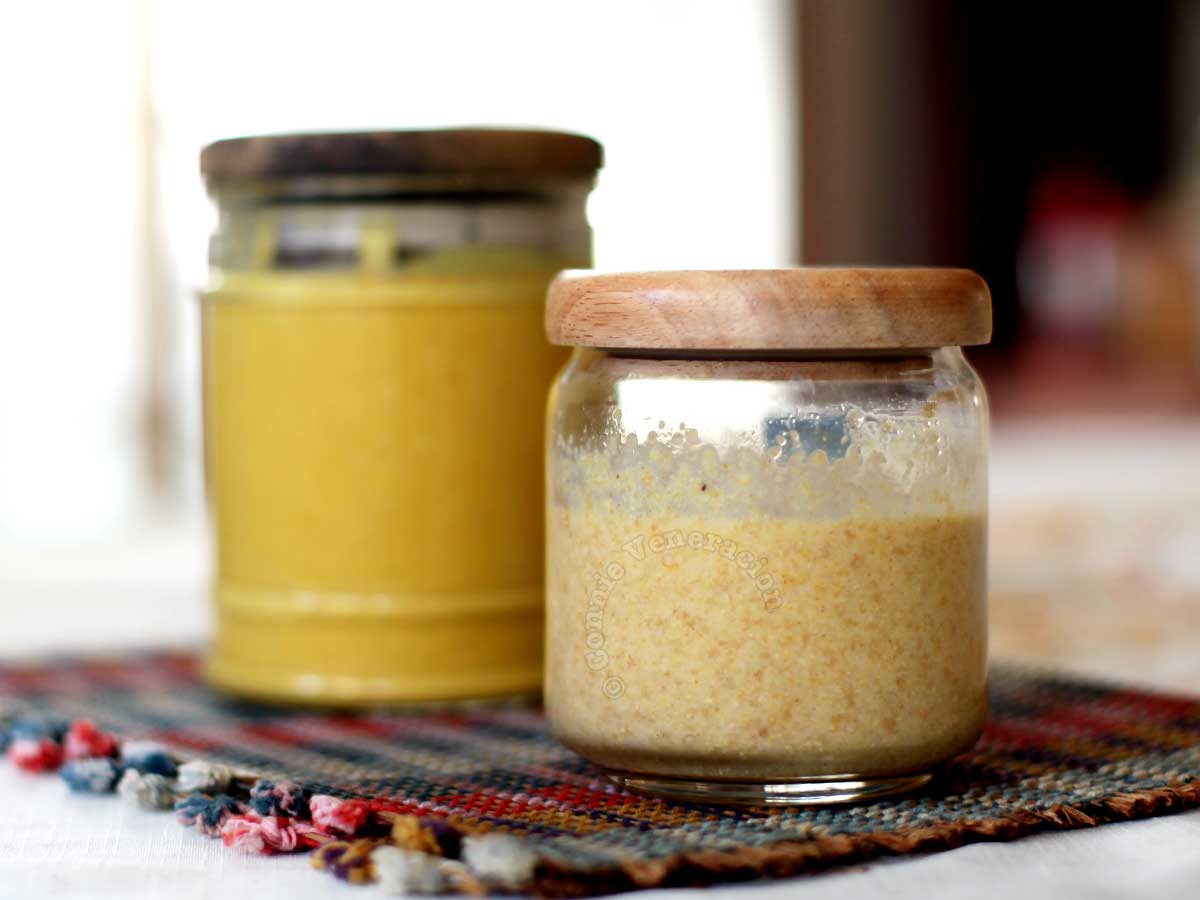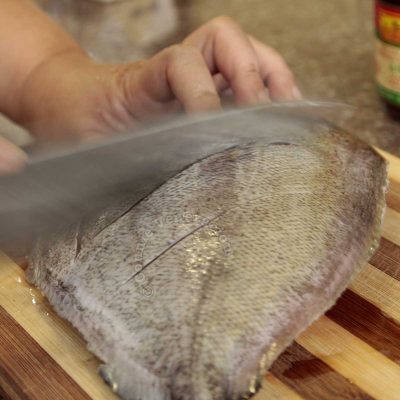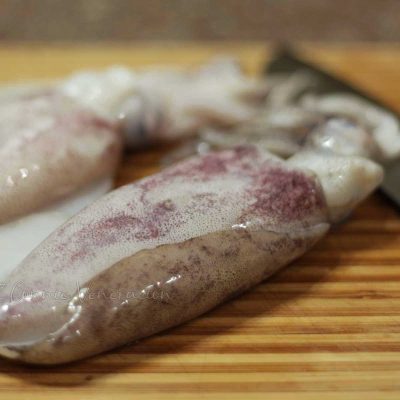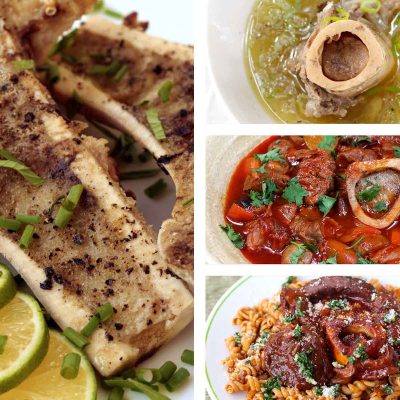We buy it in squeezable bottles and it comes in a variety of flavors. But plain mustard is sour and spicy . It’s lovely to drizzle the sauce over hotdogs and spread it on bread to make corned beef sandwich. What is mustard made of exactly?
The most basic mustard sauce has only two ingredients. Mustard seeds and vinegar. Seriously. But if you’re looking to replicate the stuff you get from the grocery, know that mustard sauce is not always yellow.
What makes mustard sauce yellow?
Mustard seeds comes in an array of colors. If you use brown, red or black mustard seeds, the sauce will not have the same color as the stuff that comes out of the squeezable plastic bottles that we find on the grocery shelves.
But even when you use yellow mustard seeds, the color is of the sauce will be nowhere as bright as store-bought mustard sauce.Turmericis added to give the sauce that bright lovely hue.
How do you make mustard sauce from scratch?
You can buy mustard seeds in the grocery. Not too much. A hundred grams of mustard seeds will yield about three and a half cups of sauce.
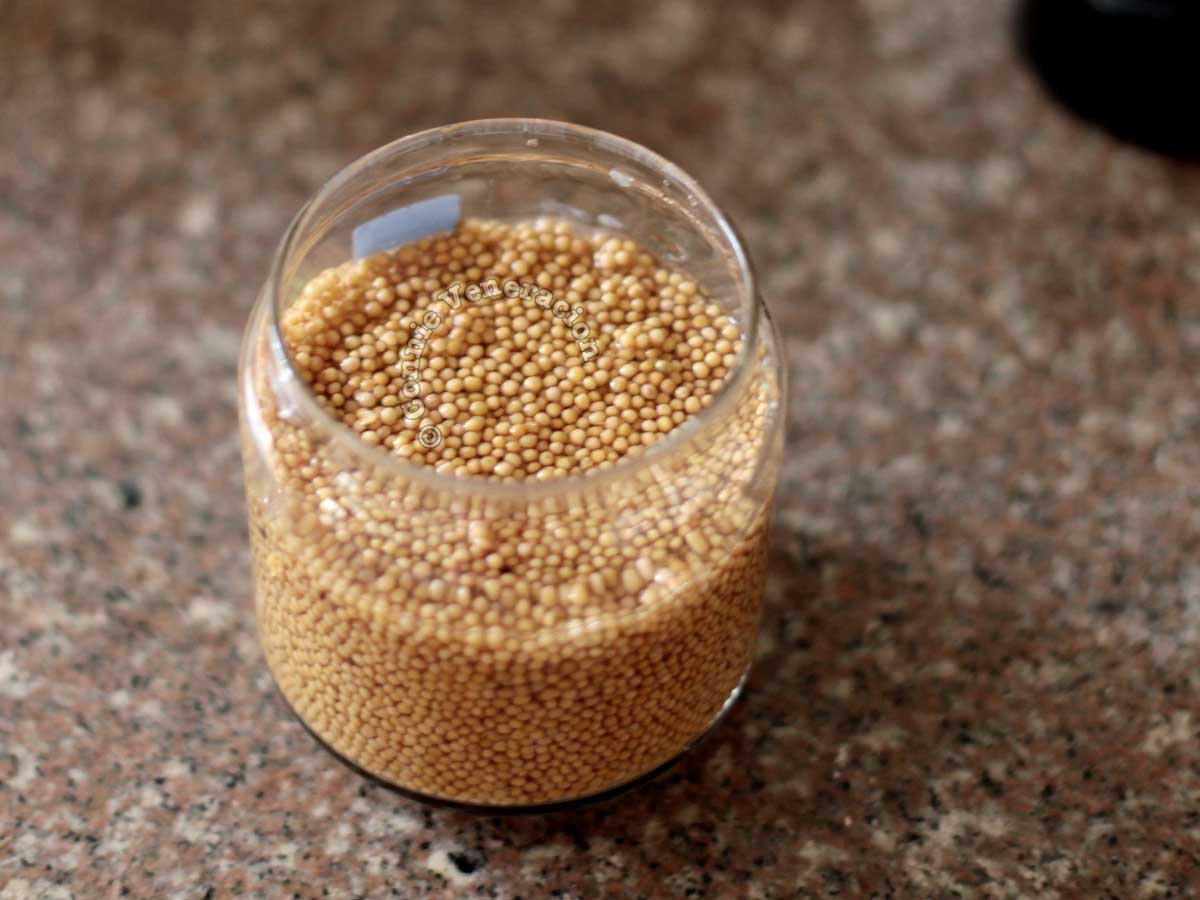
Start by soaking the mustard seeds to soften them. I used one part water and one part white vinegar. An hour or two of soaking softens them sufficiently. The seeds will swell so use a 1:3 ratio. One part seeds and three parts liquid.
After soaking, put the seeds with the liquid in a blender. Process until the desired consistency is reached. If the motor of the blender has a hard time, you can add more water to the seeds to help the motor along. Don’t worry if the mixture appears thin at this stage. The sauce will thicken on its own.

How long does the processing last? That depends on the power of your blender. Mine took two to three 30-second cycles. After two cycles with the mixture still a bit grainy, I poured a third into a jar. I processed the remainder for another cycle until it was a smooth paste. In the photo above, the grainy mustard is on the right; the smooth mustard is on the left.
Next, add the aromatics, seasonings and color.
You can add seasonings and spices to the basic sauce
The flavor of homemade mustard can be customized according to the preferences of one’s taste buds. Like very tangy mustard? Add more vinegar. Want something a bit sweet? Choose between honey and sugar. Want something more earthy than usual? Add cinnamon and cloves. You can have a mustard for your hotdogs, another for marinades and still another for making salad dressings.
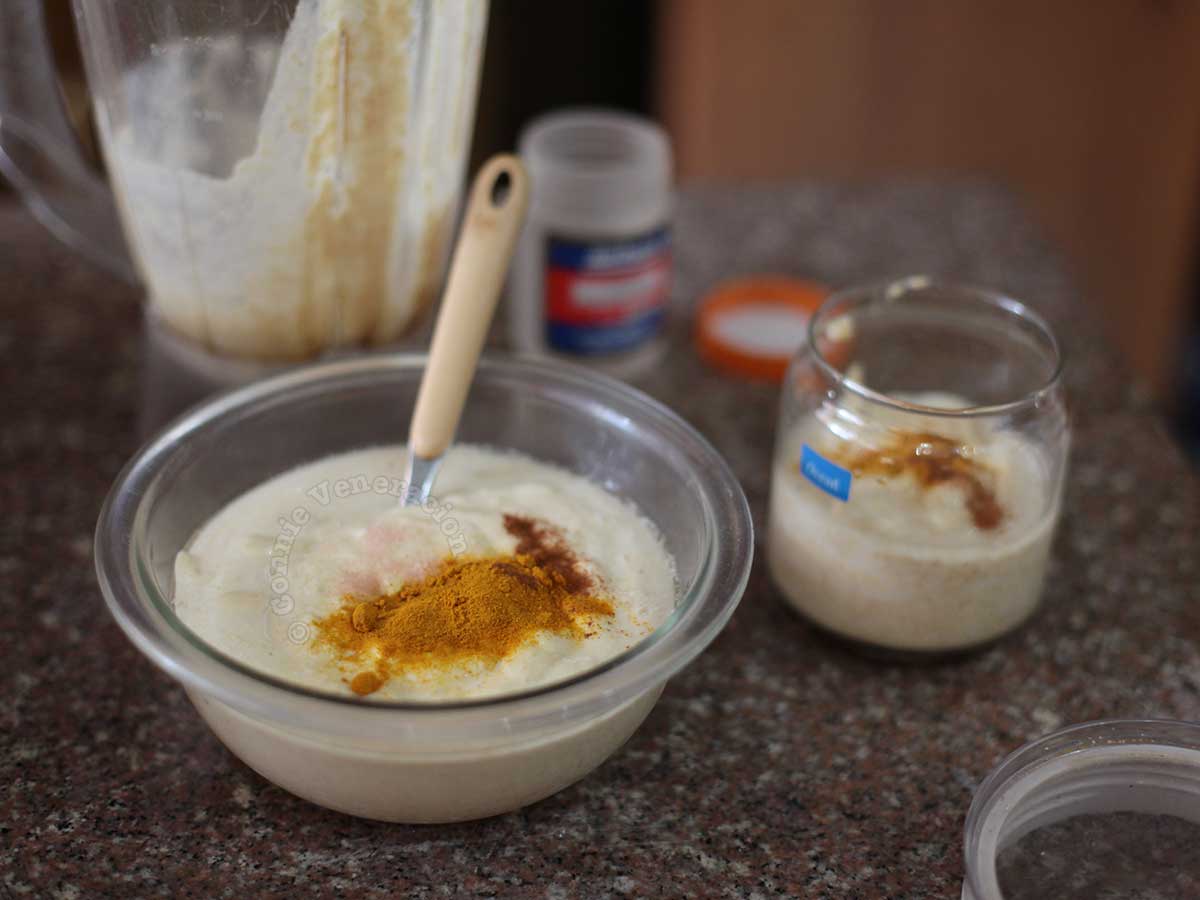
I added more vinegar, salt, turmeric, a bit of cinnamon and cloves, and some sugar for balance. There is no formula here. Just stir, andseeand taste as you go along. Want a really bright yellow? Add more turmeric. More tang? Drizzle in more vinegar.
Note that at this stage, the sauce will be very hot. I mean, spicy hot. The heat will mellow over time. More on that below.
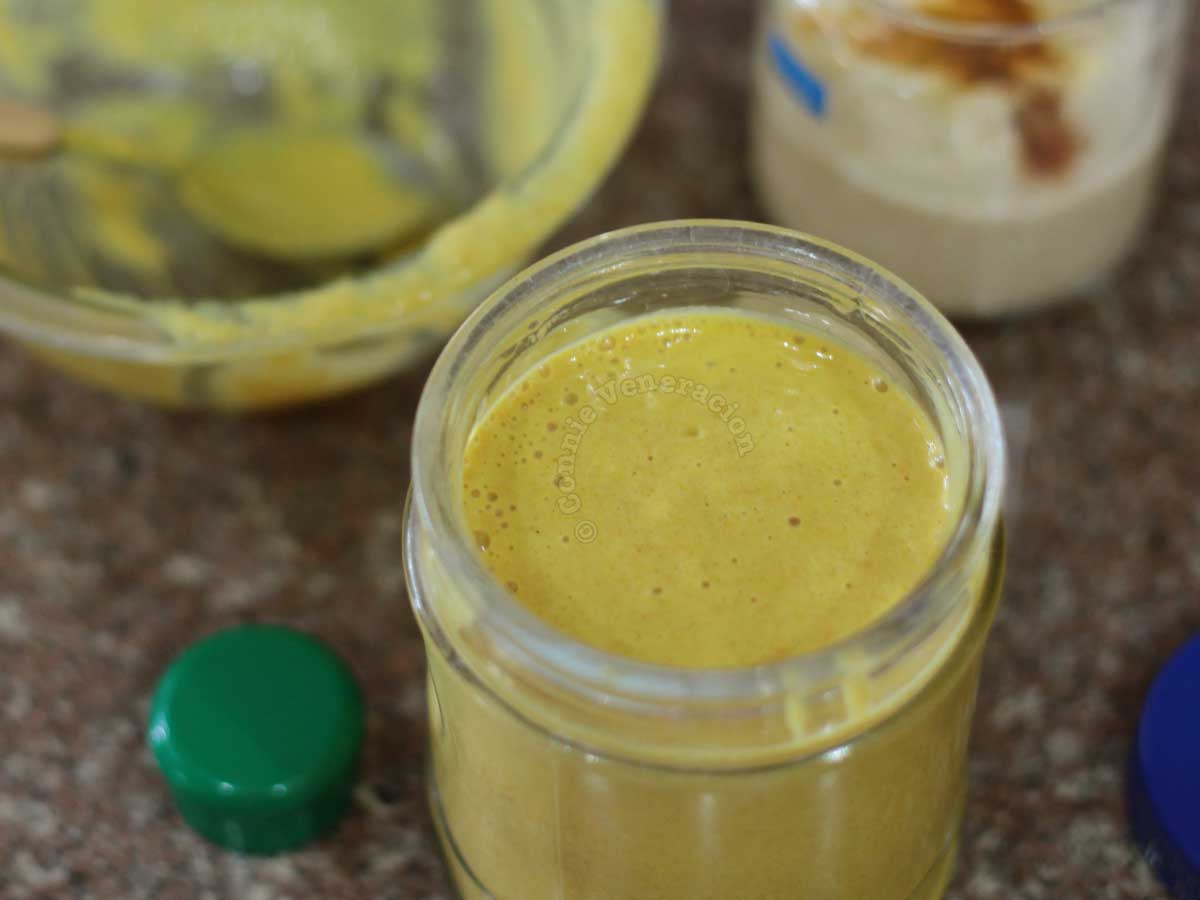
When the sauce tastes right to you, you can pulse it a few more times in the blender to make sure that everything you added gets distributed evenly. Pour the yellow sauce into a jar with a tight lid.
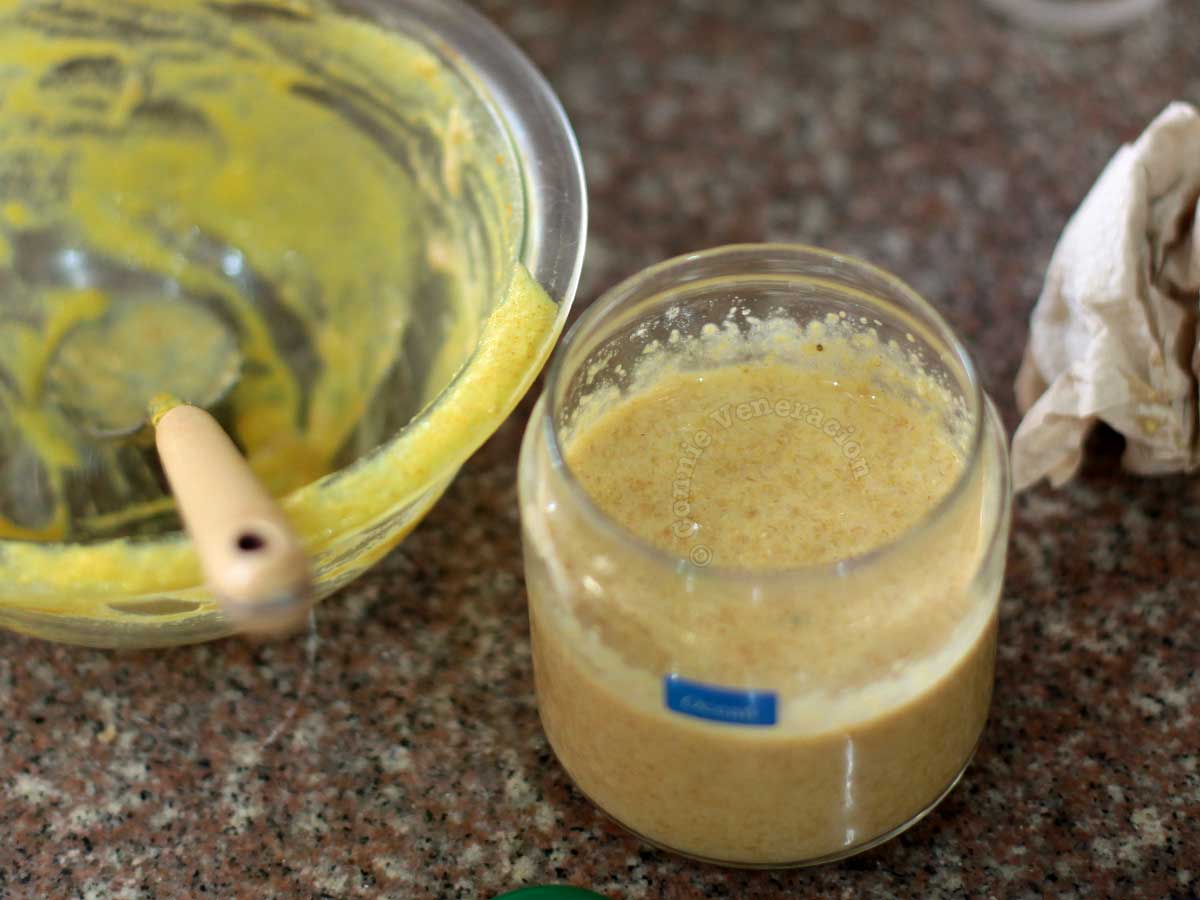
For the grainy mustard, I added the same seasonings but less turmeric and vinegar, and more sugar. And I didn’t put the mixture back into the blender because that would have ruined the grainy texture.
Let the mustard sauce sit in a cool dark place to allow the flavors to develop. It is during this stage that the mustard looses the intense heat and the flavors blend. It took my mustard ten days to mellow down.
Some say mustard sauce doesn’t even need refrigeration because mustard seeds have an anti-bacterial property that defies mold, mildew and bacteria of decay blah blah blah… From experience, if you live in a warm and humid region, keep your homemade mustard in the fridge after letting it sit at room temperature for a week to ten days.
How is mustard sauce used in cooking / dining?
Mustard sauce is primarily a condiment. You use it to enhance cooked food. You may also use mustard in marinades, braising liquids and in salad dressings.

